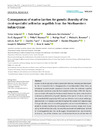Identificador persistente para citar o vincular este elemento:
https://accedacris.ulpgc.es/jspui/handle/10553/106179
| Campo DC | Valor | idioma |
|---|---|---|
| dc.contributor.author | Torquato, Felipe | en_US |
| dc.contributor.author | Range, Pedro | en_US |
| dc.contributor.author | Ben‐Hamadou, Radhouane | en_US |
| dc.contributor.author | Sigsgaard, Eva E. | en_US |
| dc.contributor.author | Thomsen, Philip F. | en_US |
| dc.contributor.author | Riera, Rodrigo | en_US |
| dc.contributor.author | Berumen, Michael L. | en_US |
| dc.contributor.author | Burt, John A. | en_US |
| dc.contributor.author | Feary, David A. | en_US |
| dc.contributor.author | Marshell, Alyssa | en_US |
| dc.contributor.author | D'Agostino, Daniele | en_US |
| dc.contributor.author | DiBattista, Joseph D. | en_US |
| dc.contributor.author | Møller, Peter R. | en_US |
| dc.date.accessioned | 2021-03-24T11:24:49Z | - |
| dc.date.available | 2021-03-24T11:24:49Z | - |
| dc.date.issued | 2019 | en_US |
| dc.identifier.issn | 2045-7758 | en_US |
| dc.identifier.uri | https://accedacris.ulpgc.es/handle/10553/106179 | - |
| dc.description.abstract | Ocean circulation, geological history, geographic distance, and seascape heterogeneity play an important role in phylogeography of coral‐dependent fishes. Here, we investigate potential genetic population structure within the yellowbar angelfish (Pomacanthus maculosus) across the Northwestern Indian Ocean (NIO). We then discuss our results with respect to the above abiotic features in order to understand the contemporary distribution of genetic diversity of the species. To do so, restriction site‐associated DNA sequencing (RAD‐seq) was utilized to carry out population genetic analyses on P. maculosus sampled throughout the species’ distributional range. First, genetic data were correlated to geographic and environmental distances, and tested for isolation‐by‐distance and isolation‐by‐environment, respectively, by applying the Mantel test. Secondly, we used distance‐based and model‐based methods for clustering genetic data. Our results suggest the presence of two putative barriers to dispersal; one off the southern coast of the Arabian Peninsula and the other off northern Somalia, which together create three genetic subdivisions of P. maculosus within the NIO. Around the Arabian Peninsula, one genetic cluster was associated with the Red Sea and the adjacent Gulf of Aden in the west, and another cluster was associated with the Arabian Gulf and the Sea of Oman in the east. Individuals sampled in Kenya represented a third genetic cluster. The geographic locations of genetic discontinuities observed between genetic subdivisions coincide with the presence of substantial upwelling systems, as well as habitat discontinuity. Our findings shed light on the origin and maintenance of genetic patterns in a common coral reef fish inhabiting the NIO, and reinforce the hypothesis that the evolution of marine fish species in this region has likely been shaped by multiple vicariance events. | en_US |
| dc.language | eng | en_US |
| dc.relation.ispartof | Ecology and Evolution | en_US |
| dc.source | Ecology and Evolution [ISSN 2045-7758], v. 9, p. 11215–11226 | en_US |
| dc.subject | 251005 Zoología marina | en_US |
| dc.subject.other | Connectivity | en_US |
| dc.subject.other | Coral reef fish | en_US |
| dc.subject.other | Marine biogeography | en_US |
| dc.subject.other | Phylogeography | en_US |
| dc.subject.other | Pomacanthus maculosus | en_US |
| dc.subject.other | Seascape genomics | en_US |
| dc.title | Consequences of marine barriers for genetic diversity of the coral‐specialist yellowbar angelfish from the Northwestern Indian Ocean | en_US |
| dc.type | info:eu-repo/semantics/article | en_US |
| dc.type | Article | en_US |
| dc.identifier.doi | 10.1002/ece3.5622 | en_US |
| dc.contributor.orcid | 0000-0003-1264-1625 | - |
| dc.description.lastpage | 11226 | en_US |
| dc.identifier.issue | 19 | - |
| dc.description.firstpage | 11215 | en_US |
| dc.relation.volume | 9 | en_US |
| dc.investigacion | Ciencias | en_US |
| dc.type2 | Artículo | en_US |
| dc.identifier.external | 82900348 | - |
| dc.description.numberofpages | 12 | en_US |
| dc.utils.revision | Sí | en_US |
| dc.date.coverdate | Agosto 2019 | en_US |
| dc.identifier.ulpgc | No | en_US |
| dc.contributor.buulpgc | BU-BAS | en_US |
| dc.description.sjr | 1,238 | |
| dc.description.jcr | 2,392 | |
| dc.description.sjrq | Q1 | |
| dc.description.jcrq | Q2 | |
| dc.description.scie | SCIE | |
| item.grantfulltext | open | - |
| item.fulltext | Con texto completo | - |
| crisitem.author.dept | GIR ECOAQUA: Biodiversidad y Conservación | - |
| crisitem.author.dept | IU de Investigación en Acuicultura Sostenible y Ec | - |
| crisitem.author.dept | Departamento de Biología | - |
| crisitem.author.orcid | 0000-0003-1264-1625 | - |
| crisitem.author.parentorg | IU de Investigación en Acuicultura Sostenible y Ec | - |
| crisitem.author.fullName | Riera Elena, Rodrigo | - |
| Colección: | Artículos | |
Citas de WEB OF SCIENCETM
Citations
23
actualizado el 08-jun-2025
Visitas
75
actualizado el 30-dic-2023
Google ScholarTM
Verifica
Altmetric
Comparte
Exporta metadatos
Los elementos en ULPGC accedaCRIS están protegidos por derechos de autor con todos los derechos reservados, a menos que se indique lo contrario.
